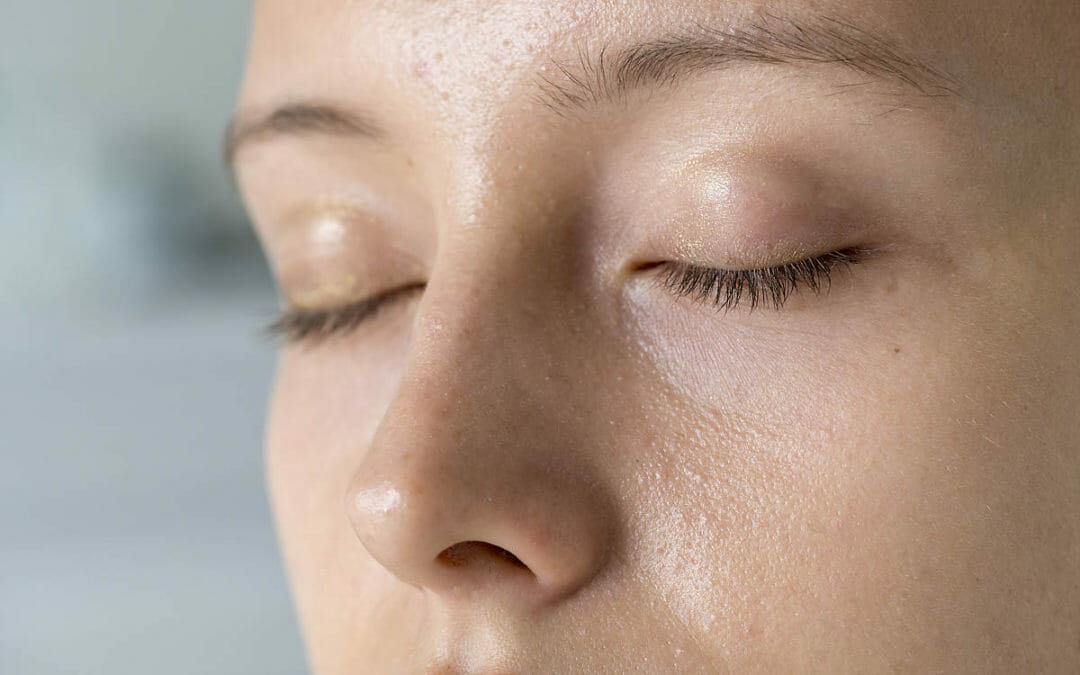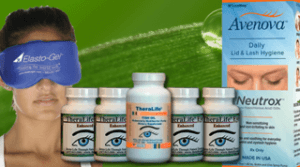Meibomian Gland Dysfunction Treatments.
What Are Meibomian Glands?
Did you know that you have approximately 75 oil glands in the eyelids of each eye? These glands are called Meibomian glands and are located just behind the eyelash follicles. Their important role is to secret Miebum, which is oil, into your tear film
Meibomian glands are the tiny oil glands which line the margin of the eyelids (the edges which touch when the eyelids are closed). These glands secrete oil which coats the surface of our eyes and keeps the water component of our tears from evaporating (drying out). Together, the water and the oil layer make up the tear film. The tear film lubricates and keeps the surface of our eyes healthy.
The Meibomian gland exists at either the upper eyelid or the lower eyelid. Almost every eyelid is surrounded by a 25-foot gland located vertically around a lash line. This gland secretes oil at posterior lid margin and the oil is mixed to protect the tear film. If these glands are blocked they cannot secrete oil.
Blocking of Meibomians is often responsible for dry eye syndrome and it is called “meibomian gland dysfunction.”
Cause of meibomian gland dysfunction
Dry Eyes
Do people suffer from dry eyes?
Dry Eye Syndrome happens if you have not enough or too much tears in your eyes. Contact lenses can become uncomfortable if worn too frequently and this irritation may lead to a decreased quality of life. Dry eyes syndrome can be caused by climatic conditions and exposure to pollution. Symptoms associated with dry eyes can be considerably reduced upon treatment.
The tear film lubricates and keeps the surface of our eyes healthy; it also affects how we see. If either the water or oil layer is decreased, or is of poor quality, we may have symptoms of irritation and/or blurred vision.
Blepharitis
Blepharitis often occurs alongside acne rosacea. Rosacea is another chronic inflammatory disorder that affects the midline facial skin and causes the development of fine telangiectasias, which suggests chronic lid margin inflammation and recurrent inflammatory papules and pustules
Contact lens wear
Research has shown that contact lens wear is associated with meibomian glands changes, and these changes remain for up to six months after use of contact lenses is discontinued.
How is Meibomian Gland Dysfunction detected?
It has essentially a similar effect as dry eyes syndrome. The only person who knows how to treat Meibomian Gland Dysfunction is your eye doctor. If you need meds in the eye, it may be necessary for an eye doctor to do tests to determine whether you have Meibomian Gland Dysfunction. It reflects the contents of your meibomian glands.
In some cases observation of this secretion can help diagnose meibomian gland dysfunction in an individual. Because meibomian gland dysfunction affects stability of the tear film your physician could check whether you have tear. Tests are sometimes called tear breakup time tests (TBTUT).
What Are The Symptoms Of Meibomian Gland Dysfunction?
Dry eyes can lead to inflammation as well as redness and itchiness. Often this is a sign that an obstruction occurs between the meibomian glands. However Meibomian Gland Dysfunction can cause a number of other problems. Those with Meibomian Gland Dysfunction symptoms may also be affected by Meibomian Gland Dysfunction or other related disorders. The eye area is often an early indicator for diseases that are very common, and the treatment is best for these conditions as it is a very effective means of protecting your eyes.
The oil glands become blocked with thickened secretions. Chronically clogged glands eventually become unable to secrete oil which results in permanent changes in the tear film and dry eyes.
Symptoms include:
- Dryness •
- Burning
- Itching
- Stickiness/ Crustiness
- Watering
- Light Sensitivity
- Red Eyes
- Foreign Body Sensation
- Chalazion /Styes
- Intermittent Blurry vision.
Treatment of meibomian gland dysfunction
Typical procedures for Meibomian GlandDysfunction include applying compresses to the eyelid, then massage.
The treatment aims at unclogging slits in the meibomian glands.
Some people use cold, dry washcloths on the eyes closed. Some suggest the patient wear a mask that delivers a protective layer on the eyelid. In both instances the heat therapy on the eyelids follows the massaging of the eyelids releasing the burned oil from the glands.
Unfortunately, heat compresses are rarely sufficient for the treatment of meibomian and its dysfunction. There have been numerous treatments for Meibomian Gland Dysfunctions in the past.
Treatment and preventative treatment must be done every day and should include all or some of the following:
1) WARM COMPRESSES
Heating the eyelid margin will increase oil production and melt the “crusty” oil that has become solid in the glands. Use a warm (not too hot) wet washcloth to apply heat on the eyelids for four minutes or more. This warms the oil, allowing it to flow more freely, and helps soften lash debris. This should be done twice a day when there are active meibomian gland dysfunction on going.
2) Eyelid scrubs
People with meibomitis need to clean their eyelids every day to reduce blockages and lower the risk of gland infection. Just add eye hygiene to your daily route, similar to brushing your teeth or washing your hair. Moist disposable wipes called lid scrubs are a good way to disinfect lids and clear any obstruction. These products are available at drug stores.
How Many Treatments Are Required For Meibomian Gland Dysfunction?
Although it’s possible to your eye doctor fewer than 1 session to treat MGD, it is extremely important to maintain optimum ocular hygiene and combine various treatments.
Meibomian Gland Expression (20 mins)
Under anesthetics we will clear out small obstructions and fibroses that block meibomian glands function. This operation is carried out on an ambulatory chair and is performed with local anesthesia. This specially designed instrument called the Mastrota paddle (OCuSOFT), invented by Katherine Mastrota, MD, blocks the meibomian gland and expresses accumulations of oil. The use of topical anti-inflammatory medication may reduce inflammation after the use. As we use topically administered anesthesia, Meibomian Gland Expression doesn’t seem painful and most patients tolerate this procedure without discomfort.
Eyelid Massage
After applying warm compress to both the eyelids you can gently rub your fingers on your eyelids to express the meibomian gland. Do it around 5 to 10 times after heating.
Lid Scrubs
This helps remove oil, bacteria and debris which block the oil gland openings. Use a Q-tip, your fingers, or a warm washcloth on the tips of your fingers to gently scrub along the lash line on the top and bottom eyelids.
You can use a mild soap like cetaphil or CeraVe or dilute baby shampoo. we highly recommend Avenova lid scrubs to prevent bacteria from re-attachment onto your eyelids.
Antibacterial eye drops
Several studies indicate the presence of antibacterial eye drops in meibias. Depending on your exam your eye doctor may suggest if these are suitable options for you.
Flax Seed Oil and Omega-3 capsules
Research indicates Meibomian Gland Dysfunction sufferers can improve the health of their bodies through the addition of omega-3 fat in their diets that help maintain oil consistency and reduce inflammation. Flax seed oil and omega 3 capsules contain omega-3.
Lacritek – an innovative treatment that is effective to help dry eye. Lacritec offers an exclusive blend of Omega fatty acids derived from Flax Seeds, Fish Oils & Borage Oil.
Eyelid Warming with Blephasteam® (15 mins)
When you visit your eye doctor for treatment of MGD you receive 15 minutes of therapy with BlephaSteamTM which provides a latent moist heat therapy around the eyelids to unblock the Meibomian glands and thus to reduce the swelling. Blephasteam ® provides standardized treatments with a constant safe temperature that can be controlled with hot compress. BlephasteamTM is safe, convenient and enables clear vision throughout the usage. It lets you perform routine activities like viewing TV shows and reading or playing your smartphone.
Intraductal Meibomian Probing
When home care isn’t enough to control symptoms, new treatments are available to open blocked glands. An eye doctor can insert a small probe into each gland, removing the obstruction. The process takes 10 to 15 minutes. It’s not known yet how often the process might need to be repeated. Because the therapy is new, it may not be covered by insurance.





